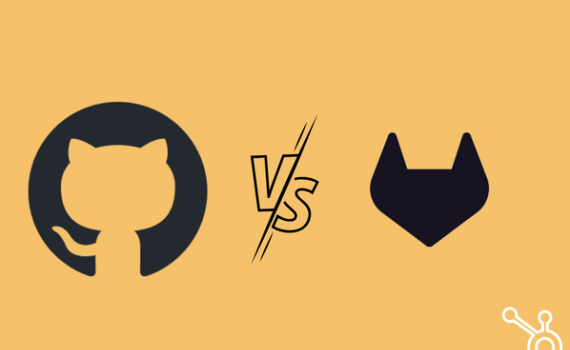How can ChatGPT be used for application development? What are the Benefits and limitations of ChatGPT?
ChatGPT is a chatbot development tool that utilizes NLP to allow developers to create chatbots that can understand and respond to user input naturally and conversationally. It was released as a free research preview/prototype in November 2022.
Share
How can ChatGPT be used for application development?
There are numerous ways that developers can utilize this tool. ChatGPT can be used in various industries and scenarios to create functional, innovative, engaging chatbot applications. Broadly, the use cases are of the following forms:
- Chatbots: for normal human conversation
- Translation: of words from one language to another
- Summarization: to conceptualize the main aspects of any topic
- Completion: for efficiently completing sentences/paragraphs
- Creation: of fresh content
Chatbot development services take a different turn with ChatGPT functioning in its natural and conversational mode. In terms of specific industries and services, this is how the ChatGPT can contribute:-

1. Customer service
By using ChatGPT to create a chatbot that can understand and respond to customer inquiries and requests naturally and conversationally, businesses can provide a more efficient and convenient customer service experience. This can save time and resources for both the business and the customer.
2. eCommerce websites
These could be functional, humorous, and relatable. ChatGPT can be used to create chatbots that can assist customers in finding products, providing recommendations, and completing transactions. This can provide a more personalized shopping experience for customers and potentially increase sales for the business. A semblance of real human interaction with wit, enjoyment, and apt expressions in words makes up for a fulfilling shopping experience.
3. Education or training purposes
Students and employees can gain from the personalized learning experience that customized content and assessments bring. These are based on the user’s needs and progress. This can be especially useful in industries where ongoing training is necessary, such as healthcare or finance.
4. Scheduling and appointment booking
Chatbots can facilitate the scheduling process, allowing users to easily book appointments or reserve resources without navigating a complex system or waiting on hold. This can be especially useful for businesses that rely on scheduling, such as healthcare providers or service providers.
5. Entertainment or leisure
Chatbots could create virtual assistants for music or movie recommendations or provide personalized workout or meditation routines. ChatGPT’s ability to understand and respond to user input naturally and conversationally makes it well-suited for these applications.
6. Travel Industry
Chatbots could assist in booking flights, hotels, and rental cars and provide recommendations for destinations and activities. This could make the travel planning process more efficient and convenient for users.
7. Healthcare Industry
Chatbots could be used to provide medical information and assistance, such as answering frequently asked questions or providing symptom checkers. This could alleviate some burdens on healthcare professionals and provide a more convenient resource for patients.
- Marketing and sales—crafting personalized marketing, social media, and technical sales content (including text, images, and video); creating assistants aligned to specific businesses, such as retail
- Operations—generating task lists for efficient execution of a given activity
- IT/engineering—writing, documenting, and reviewing code
- Risk and legal—answering complex questions, pulling from vast amounts of legal documentation, and drafting and reviewing annual reports
- R&D—accelerating drug discovery through a better understanding of diseases and discovery of chemical structures
Benefits of ChatGPT
1. Ability to understand and respond to a wide range of language inputs
ChatGPT can understand various language inputs, even those thought of as complex or weird! It has been trained on a large human language dataset, enabling it to understand and generate responses to a diverse range of user inputs. This makes it perfect for creating chatbots that handle many customer inquiries or requests.
2. Ability to learn and improve over time.
As ChatGPT processes more and more user input, it can adapt and enhance its responses to meet users’ needs better. This means that the chatbots created using ChatGPT can become more effective and efficient over time, leading to a better user experience.
3. Enabling rapid application development
With its intuitive interface and pre-trained NLP model, ChatGPT allows developers to create chatbot applications quickly and easily. This can be especially useful for businesses that need to rapidly develop and deploy chatbot applications to meet changing customer needs or market demands.
ChatGPT highlights an interesting factor: work in a human-machine hybrid mode. Humans can not only prompt AI for good results. They can also guide and correct mistakes that AI might make. In a symbiotic relationship, both the human and the AI are helping each other become “experts”.
Limitations of ChatGPT
ChatGPT is a powerful tool for developers looking to create chatbot applications using natural language processing. Its ability to understand and respond to complex and varied language inputs and learn and improve over time makes it an ideal choice for creating chatbots that can provide value to users.

- Size of Database: Even with its extensive database, ChatGPT can sometimes slip on catching the real-time diversity of languages, experiences, and cultural diversities. Hence responses sometimes turn out to be out of context or inappropriate.
- Pre-trained models: Factually, ChatGPT depends on machine learning algorithms trained by data. Given that there are chances that the training may be biased or faulty, we can’t rely on the correctness of the responses. There could be systemic biases too.
- Resource Intensive: The model draws power from many resources. This could be a limitation for mobile devices or some low-power devices.
- Timeline: ChatGPT doesn’t cover events post-2021 yet. So you will not find answers to queries related to anything after that time.
- Cost: It is reported that the model currently costs US $3 million per month to run. This can prove to be unmanageable in the long run. Plus, people need to find out where the costs for users will be placed once the model review/research period is over.
- The complexity of facts: The model can only sometimes handle a series of attributes about people, places or events, etc. Given the pre-trained structure, the it could confuse factors and give random answers. Also, given that data is from the internet, the responses could be biased. Generative AI can be wrong too! It cannot always have multiple perspectives.


